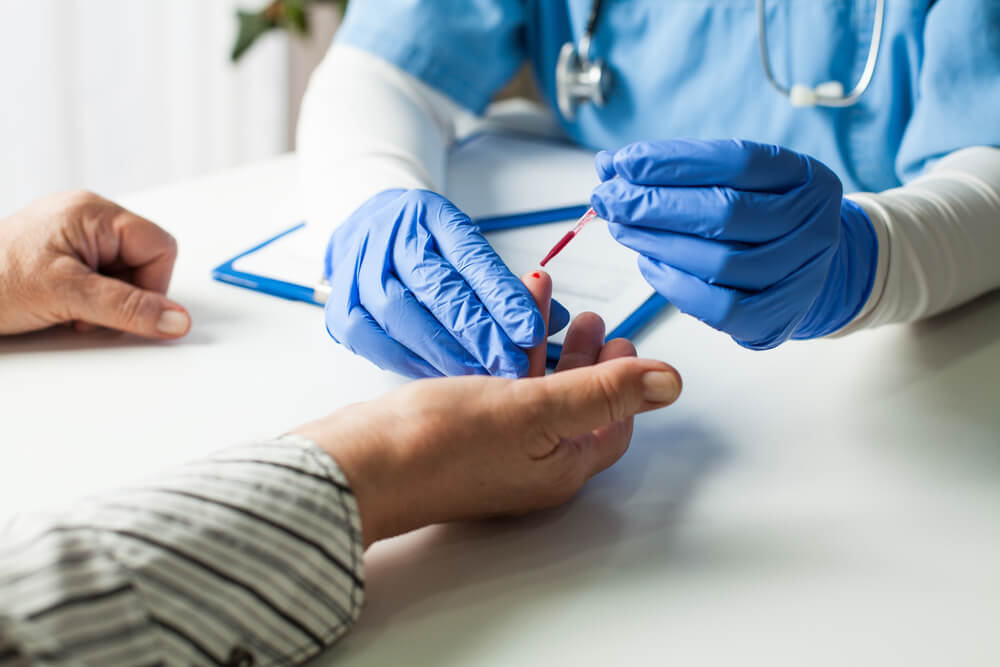Why blood for analysis taken from the ring finger
We all donate blood from time to time (general analysis, hormone testing, biochemistry, etc.). In the case of medical examination, blood is mainly taken from a finger, for routine tests - from a vein. The second method, according to experts, is much more popular. For specialists in the laboratory, this is convenient and allows you to take the required amount of material. By the way, it often doesn't matter how your blood was taken - from a finger or from a vein. In any case, it is suitable for most research, writes Life.

Photo: Shutterstock
At times, drawing venous blood can be difficult. For example, in infants it is difficult to find a vein, but to damage a small hand is easy. Problems also arise with extensive body burns or if the patient is obese.
“Some patients require regular monitoring of blood counts, and constant blood sampling from a vein can lead to the development of complications: phlebitis (inflammation of the venous wall), scarring, etc. In such cases, they usually resort to capillary blood sampling,” said Vladimir Mukhin, clinical laboratory diagnostics doctor at a medical company Labquest.
Capillary blood is taken from a finger, and a ring finger. This is due to the anatomy of the structure of the hand.
“Inside the little finger and thumb there are places for tendons that communicate with the membranes of the entire hand, so if they are accidentally damaged, you can get an infection that will spread to the entire hand. The index and middle fingers are much more often involved in the work of the hands, therefore the skin on the pads of these fingers is rougher, and therefore more difficult to pierce. The ring finger, on the contrary, has the most delicate skin, so the puncture is easier to perform, the wound heals faster, and there is less discomfort. In addition, the risk of developing serious complications is minimal,” the doctor explained.
Topic: A man with special blood was a donor for 60 years and saved 2,4 a million children.
But blood from a finger has its drawbacks.
“Unfortunately, no matter how the procedure is carried out, this does not guarantee that enough blood will flow from the puncture site by gravity, and the laboratory will not reject the resulting sample. The amount of “rejects” (blood clots, insufficient volume for research, and so on) when taking capillary blood is more than ten times higher than the same indicator when taking venous blood,” added Vladimir Mukhin.
By the way, a finger is not always needed for capillary blood sampling. For example, in young children it is usually taken from the heel, less often from the big toe. In older children and adults, blood can even be taken from the earlobe, but this, according to an expert, is a rarity.
Read also on ForumDaily:
911 call rules that can save lives
Medicine in the USA: expensive and even more expensive
How to be treated in the US and get paid for it
Subscribe to ForumDaily on Google NewsDo you want more important and interesting news about life in the USA and immigration to America? — support us donate! Also subscribe to our page Facebook. Select the “Priority in display” option and read us first. Also, don't forget to subscribe to our РєР ° РЅР ° Р »РІ Telegram and Instagram- there is a lot of interesting things there. And join thousands of readers ForumDaily New York — there you will find a lot of interesting and positive information about life in the metropolis.
-
Where in the USA to buy the medicines we are used to: a list of pharmacies5330
-
Six ways to cut your medical bill in the US436
-
Joy to Work: 37 Jobs with Lowest Stress and Good Pay419
-
What folk remedies treat the common cold in the USA: what surprises our354
-
Personal experience: why immigrants have more chances of success in the USA than Americans290
-
Burger Arthritis: How Fast Food Triggers Autoimmune Diseases233
-
XNUMX stunning US lavender farms that will take you to French Provence220
-
Actions in a terrorist attack: how to survive yourself and help others6333
-
Where in the USA to buy the medicines we are used to: a list of pharmacies5330
-
How to hit the jackpot: tips from a man who won the lottery 7 times4898
-
Life after death: what happens to places of mass executions in the USA3883
-
How to start a profitable business in the USA, if you have only $ 203281
-
4 US Social Security Traps and How to Avoid Them1493
-
Street, avenue, boulevard or drive: how to understand the classification of US streets and roads1461











